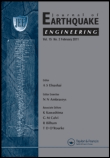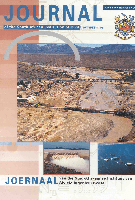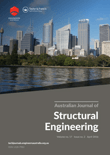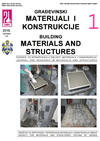
Structural Integrity and Life-Integritet I Vek Konstrukcija
Scope & Guideline
Empowering Innovation in Civil Engineering.
Introduction
Aims and Scopes
- Structural Integrity Assessment:
Research that investigates methods and models for assessing the structural integrity of materials and components, ensuring safety and reliability in engineering applications. - Material Behavior and Performance:
Studies focusing on the mechanical properties, durability, and performance of different materials under various loading and environmental conditions. - Numerical and Experimental Methods:
Development and application of numerical simulations and experimental techniques to analyze and predict the behavior of materials and structures. - Welding and Joining Technologies:
Research on welding techniques, joint integrity, and the impact of welding parameters on the mechanical properties of joined materials. - Creep and Fatigue Analysis:
Investigation into the time-dependent deformation (creep) and fatigue failure of materials, crucial for components subjected to long-term loading. - Innovative Manufacturing Techniques:
Exploration of advanced manufacturing methods, including additive manufacturing and their implications for structural integrity.
Trending and Emerging
- Additive Manufacturing and 3D Printing:
An increasing number of studies focus on the implications of additive manufacturing technologies, exploring their effects on material properties and structural integrity. - Advanced Computational Modeling:
There is a notable uptick in research utilizing sophisticated numerical methods, such as finite element analysis and machine learning, to predict material behavior and structural integrity. - Sustainability and Green Materials:
Emerging research on sustainable materials and practices, including the assessment of environmental impacts and the use of eco-friendly materials in construction. - Health Monitoring and Structural Assessment Techniques:
Growing interest in real-time health monitoring systems and non-destructive testing methods for assessing the integrity of structures in service. - Nanomaterials and Their Applications:
Increased exploration of nanomaterials, focusing on their mechanical properties and applications in enhancing the performance of traditional materials.
Declining or Waning
- Traditional Material Testing Methods:
Research focusing on conventional material testing methods has decreased, possibly due to the rise of more advanced, non-destructive testing techniques and computational modeling. - Basic Welding Techniques:
Studies centered on traditional welding techniques have waned as newer, more innovative welding methods gain attention, reflecting a shift towards advanced welding technologies. - General Structural Analysis without Specific Applications:
Papers that provided broad analyses of structural behavior without specific applications or case studies are less frequent, indicating a trend towards more applied research.
Similar Journals

MECHANICS OF ADVANCED MATERIALS AND STRUCTURES
Pioneering the future of civil and structural engineering.Mechanics of Advanced Materials and Structures is a distinguished journal published by Taylor & Francis Inc, focusing on the innovative fields of Civil and Structural Engineering, Materials Science, Mechanical Engineering, and Mechanics of Materials. With ISSN 1537-6494 and E-ISSN 1537-6532, this journal is positioned within the Q2 quartile rankings of its categories, demonstrating its significant scholarly impact. It has been a pivotal platform since its inception in 1997, providing researchers and professionals with comprehensive insights and the latest findings, until the expected closure in 2024. Situated in the United Kingdom, the journal is dedicated to enhancing the understanding of complex materials and structural behavior through rigorous peer-reviewed articles. Its high visibility in Scopus rankings further underscores its importance, making it an essential resource for those engaged in advanced materials research and structural analysis. With options for open access, the journal ensures broad dissemination of knowledge, fostering a collaborative environment for researchers, practitioners, and students alike.

JOURNAL OF EARTHQUAKE ENGINEERING
Leading the way in earthquake resilience and safety.JOURNAL OF EARTHQUAKE ENGINEERING, published by TAYLOR & FRANCIS LTD, stands as a pivotal resource in the fields of Building and Construction, Civil and Structural Engineering, and Geotechnical Engineering. With an impressive Q1 ranking in multiple categories for 2023, this journal is instrumental for researchers, professionals, and students committed to advancing knowledge in earthquake engineering and its practical applications. As a platform that spans the years from 1997 to 2024, it highlights significant contributions to safety, risk, reliability, and quality in engineering practices. While the journal operates on a subscription basis, its highly regarded articles, bolstered by robust Scopus rankings—such as rank #46 in Building and Construction—underscore its credibility and influence in shaping standards and methodologies within the discipline. Promoting innovative and evidence-based approaches, the JOURNAL OF EARTHQUAKE ENGINEERING is essential reading for anyone engaged in the science and technology of earthquake-resistant structures.

Journal of the South African Institution of Civil Engineering
Empowering engineers with cutting-edge research.Journal of the South African Institution of Civil Engineering (ISSN: 1021-2019) is a distinguished open-access publication dedicated to advancing the field of civil engineering in South Africa and beyond. Established by the South African Institution of Civil Engineering (SAICE) and South African Institute of Steel Construction (SAISI), it serves as a critical platform for sharing research, case studies, and industry developments. The journal has been openly accessible since 2015, ensuring broader dissemination of knowledge among researchers, professionals, and students alike. Although it currently holds a Q4 ranking in Civil and Structural Engineering and is positioned within the lower percentiles in Scopus rankings, its commitment to fostering growth in the engineering sector remains strong. Covering various topics from structural design to innovative construction methodologies, the journal invites contributions that push the boundaries of current practices and methodologies. This publication is essential for those invested in sustainable engineering solutions, aiming to collaborate and contribute towards the evolution of civil engineering standards in South Africa.

International Journal of Steel Structures
Exploring Excellence in Structural DesignWelcome to the International Journal of Steel Structures, a distinguished publication dedicated to advancing the field of civil and structural engineering since its inception in 2010. Published by the Korean Society of Steel Construction (KSSC), this journal aims to provide a platform for researchers and professionals to share innovative findings and essential insights related to steel structures, emphasizing both theoretical and applied research. With an impact factor that reflects its growing recognition—ranking in Q3 within the civil and structural engineering category—the journal has positioned itself as a significant contributor to the body of knowledge in this vital field. Although currently not an open-access publication, it remains an invaluable resource for students and scholars keen on exploring contemporary challenges and advancements in steel construction. Located in Seoul, South Korea, the journal continues to evolve, converging its presence into the future, with publication efforts spanning through to 2024. Engage with us as we explore the innovative applications and developments in the realm of steel structures.

Journal of Building Engineering
Advancing the Future of Building EngineeringWelcome to the Journal of Building Engineering, a premier platform for the dissemination of innovative research in the fields of Architecture, Building and Construction, Civil and Structural Engineering, Mechanics of Materials, and Safety, Risk, Reliability and Quality. Published by ELSEVIER and based in the Netherlands, this journal has solidified its reputation as a leader in the field, proudly achieving a prestigious Q1 ranking across multiple categories as of 2023. With a remarkable impact in Scopus, including being ranked #1 in Architecture and consistently placing within the top 20 in other critical disciplines, the journal is dedicated to fostering high-quality research that addresses contemporary challenges in building technology and engineering practices. The E-ISSN 2352-7102 further facilitates access to groundbreaking articles from 2015 to 2024, making it a vital resource for researchers, industry professionals, and students alike. Embrace the opportunity to engage with cutting-edge studies that not only contribute to academic dialogue but also influence practical applications in the rapidly evolving landscape of building engineering.

Australian Journal of Structural Engineering
Advancing Structural Innovation for a Sustainable FutureThe Australian Journal of Structural Engineering (ISSN: 1328-7982, E-ISSN: 2204-2261), published by TAYLOR & FRANCIS AS, serves as a pivotal platform for disseminating high-quality research in the fields of civil and structural engineering, mechanical engineering, and mechanics of materials. With a publications timeline from 2008 to 2024, this journal plays a crucial role in advancing knowledge and practice within its disciplines, boasting Q3 rankings across various categories as of 2023. Although it operates under a subscription model, the journal remains accessible to a diverse audience, including researchers, professionals, and students, seeking to enrich their understanding and engagement with contemporary engineering challenges. The Australian Journal of Structural Engineering is not only a repository of innovative ideas but also a vital resource for fostering collaboration and sparking discussion among scholars and practitioners striving for excellence in engineering design and analysis.

Electronic Journal of Structural Engineering
Elevating Engineering Standards through Open Access ScholarshipThe Electronic Journal of Structural Engineering (ISSN: 1443-9255), published by EJSE INT LTD, serves as a vital platform for disseminating innovative research and developments in the field of structural engineering. Since its inception in 2001, the journal has evolved to embrace an Open Access model starting in 2022, ensuring that cutting-edge findings are freely accessible to researchers, professionals, and students worldwide. Housed within the reputable Department of Infrastructure Engineering at the University of Melbourne, Australia, the journal focuses on a wide range of topics related to civil and structural engineering, positioning itself within the Q4 category on the 2023 Scopus rankings. While its H-index and detailed scope data are currently unavailable, the journal's commitment to quality research is evident through its continuous publication and engagement with the global academic community. With significant implications for contemporary engineering practices, The Electronic Journal of Structural Engineering not only fosters scholarly discourse but also encourages practical applications of structural engineering advancements.

Journal of Structural Fire Engineering
Empowering engineers to combat fire hazards effectively.The Journal of Structural Fire Engineering is a premier academic publication dedicated to advancing the field of fire safety and structural engineering. Published by Emerald Group Publishing Ltd, this journal features high-quality research and innovative solutions addressing crucial aspects of safety, risk, reliability, and the mechanics of materials. With an impact factor that reflects its growing influence in the academic community and a classification in the Q3 quartile across several engineering categories, the journal plays a vital role in disseminating knowledge that bridges theoretical concepts and practical applications. With coverage spanning from 2010 to 2024, researchers, professionals, and students can access a wealth of studies that explore the intersection of structural integrity and fire safety. While it currently operates under a subscription model, the journal remains committed to sharing pivotal insights that drive forward the discipline. Join the community of experts striving to enhance engineering practices and resilience against fire-related hazards.

Gradevnski Materijiali I Konstrukcije-Building Materials and Structures
Exploring the intersection of materials and structural integrity.Gradevnski Materijiali I Konstrukcije - Building Materials and Structures is a premier open-access journal dedicated to advancing the field of construction materials and structural engineering. Published by SOC MATERIALS & STRUCTURES TESTING SERBIA, this journal provides a platform for researchers, professionals, and students to share their innovative findings and developments in building materials. With a commitment to open-access since 2012, it fosters unrestricted availability of research for a wider audience, encouraging collaboration and knowledge dissemination. The journal features a diverse range of topics, including material testing, structural integrity, and sustainable construction practices, making it a vital resource for those engaged in the design and analysis of structural components. By fostering the advancement of research and practice in this crucial sector, Gradevnski Materijiali I Konstrukcije plays an essential role in shaping the future of construction and material science.

Archives of Civil and Mechanical Engineering
Elevating Civil and Mechanical InnovationsArchives of Civil and Mechanical Engineering is a distinguished peer-reviewed journal published by SpringerNature, focusing on advancing the fields of civil and mechanical engineering. With an impressive Q1 ranking in both categories in 2023, this journal caters to a global audience, addressing the evolving challenges and innovations within these vital engineering disciplines. The journal has been a pivotal platform since its inception in 2006, and it continues to be essential for researchers and practitioners seeking to publish and access high-quality research. The absence of an Open Access option ensures that published works maintain rigorous academic standards, thereby enhancing their value within institutional repositories. With a robust impact factor and high visibility on Scopus—ranking #122 out of 672 in Mechanical Engineering and #74 out of 379 in Civil and Structural Engineering—this journal is an ideal venue for professionals, researchers, and students dedicated to advancing their knowledge and contributing to cutting-edge engineering practices. Based in Germany and operating internationally, the Archives of Civil and Mechanical Engineering invites submissions that address critical issues and solutions in contemporary engineering.